Comparing benthic biogeochemistry at a sandy and a muddy site in the Celtic Sea using a model and observations
- PMID: 32009696
- PMCID: PMC6961523
- DOI: 10.1007/s10533-017-0367-0
Comparing benthic biogeochemistry at a sandy and a muddy site in the Celtic Sea using a model and observations
Abstract
Results from a 1D setup of the European Regional Seas Ecosystem Model (ERSEM) biogeochemical model were compared with new observations collected under the UK Shelf Seas Biogeochemistry (SSB) programme to assess model performance and clarify elements of shelf-sea benthic biogeochemistry and carbon cycling. Observations from two contrasting sites (muddy and sandy) in the Celtic Sea in otherwise comparable hydrographic conditions were considered, with the focus on the benthic system. A standard model parameterisation with site-specific light and nutrient adjustments was used, along with modifications to the within-seabed diffusivity to accommodate the modelling of permeable (sandy) sediments. Differences between modelled and observed quantities of organic carbon in the bed were interpreted to suggest that a large part (>90%) of the observed benthic organic carbon is biologically relatively inactive. Evidence on the rate at which this inactive fraction is produced will constitute important information to quantify offshore carbon sequestration. Total oxygen uptake and oxic layer depths were within the range of the measured values. Modelled depth average pore water concentrations of ammonium, phosphate and silicate were typically 5-20% of observed values at the muddy site due to an underestimate of concentrations associated with the deeper sediment layers. Model agreement for these nutrients was better at the sandy site, which had lower pore water concentrations, especially deeper in the sediment. Comparison of pore water nitrate with observations had added uncertainty, as the results from process studies at the sites indicated the dominance of the anammox pathway for nitrogen removal; a pathway that is not included in the model. Macrofaunal biomasses were overestimated, although a model run with increased macrofaunal background mortality rates decreased macrofaunal biomass and improved agreement with observations. The decrease in macrofaunal biomass was compensated by an increase in meiofaunal biomass such that total oxygen demand remained within the observed range. The permeable sediment modification reproduced some of the observed behaviour of oxygen penetration depth at the sandy site. It is suggested that future development in ERSEM benthic modelling should focus on: (1) mixing and degradation rates of benthic organic matter, (2) validation of benthic faunal biomass against large scale spatial datasets, (3) incorporation of anammox in the benthic nitrogen cycle, and (4) further developments to represent permeable sediment processes.
Keywords: Benthic; Biogeochemistry; Celtic Sea; Modelling; Permeable sediments.
© Springer International Publishing AG 2017.
Figures

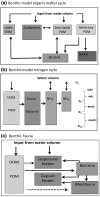
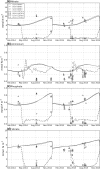


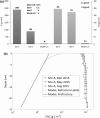
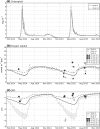


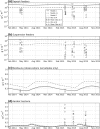
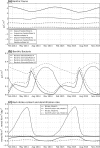
References
-
- Anonymous (1964) Effects of polluting discharges on the Thames estuary. Dept. Sci. Ind. Research, Technical paper 11, HMSO, London, pp. 1–587
-
- Arndt S, Jørgensen BB, LaRowe DE, Middelburg JJ, Pancost RD, Regnier P. Quantifying the degradation of organic matter in marine sediments: a review and synthesis. Earth Sci Rev. 2013;123:53–86. doi: 10.1016/j.earscirev.2013.02.008. - DOI
-
- Baretta JW, Ruardij P. Tidal flat estuaries: simulation and analysis of the Ems estuary. Ecol Stud. 1988;71:353.
-
- Blackford JC. An analysis of benthic biological dynamics in a North Sea ecosystem model. J Sea Res. 1997;38:213–230. doi: 10.1016/S1385-1101(97)00044-0. - DOI
-
- Blackford JC, Allen JI, Gilbert FJ. Ecosystem dynamics at six contrasting sites: a generic modelling study. J Mar Syst. 2004;52(1):191–215. doi: 10.1016/j.jmarsys.2004.02.004. - DOI
LinkOut - more resources
Full Text Sources
